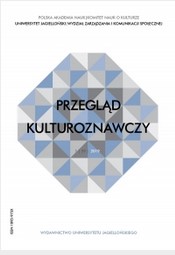Od Isotype do Many Eyes. Społeczna odpowiedzialność designu w praktykach wizualizacji danych
From Isotype to Many Eyes. Social responsibility of design in data visualization
Author(s): Marcin SkładanekSubject(s): Education, Methodology and research technology, ICT Information and Communications Technologies
Published by: Wydawnictwo Uniwersytetu Jagiellońskiego
Keywords: design; socially responsible design; sustainable design; data visualization; infographic; participation environments;
Summary/Abstract: Isotype (1925–1971) and Many Eyes (2007–2015) are two projects that share the intention of using data visualization methods and techniques as a tool for democratizing knowledge, although they differ in a considerable set of features and a large distance of time. The main goal of the creators of Isotype Otto Neurath and Marie Neurath was to overcome cultural divisions and educational stratification with an effective visual method of communicating important social facts, promoting specific values, or showing the rapid social, cultural and economic changes at the beginning of the 20th century. On the other hand, Many Eyes is an open social participation environment (web application) that gives users the ability to share data resources, generate their own visualizations and discuss the procedures for their creation and cognitive effects of their use. The authors of the system are Fernanda B. Viégas, Martin Wattenberg – two researchers and designers who have been consistently exploring the “social life of visualization” for several years. Isotype and Many Eyes – as examples of socially engaged design – are analyzed in this text on two important dimensions: firstly – how the complex conditions of design practice have been integrated (design skills and teams, design procedures and methods, technological and institutional resources); scenarios for the transfer of identified challenges, threats and barriers to a specific solution that responds to the real needs of users; secondly – scenarios for the transfer of identified challenges, threats and barriers to a specific solution that responds to the user needs.
Journal: Przegląd Kulturoznawczy
- Issue Year: 43/2020
- Issue No: 1
- Page Range: 43-54
- Page Count: 12
- Language: Polish

